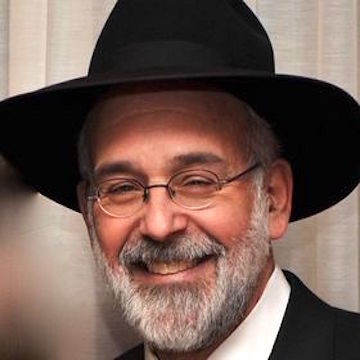Rabbi David Etengoff
338 results total, viewing 31 - 40
|
The prohibition of eating blood is one of the best-known mitzvot in Parashat Acharei Mot. In his Commentary on the Torah, on Sefer Vayikra 17:10-11, the Ramban notes that many of the verses that …
more
By Rabbi David Etengoff
|
4/26/23
|
|
The first time we are introduced to the mitzvah of brit milah is the 17th chapter of Sefer Bereshit. This mitzvah is found once again in the first of our parshiot, Parashat Tazria. This repetition …
more
By Rabbi David Etengoff
|
4/19/23
|
|
This week’s haftarah is focused on Yechezkel’s well-known nevuah (prophecy) of the “Dry Bones,” that begins: “The hand of Hashem came upon me and carried me out in the …
more
By Rabbi David Etengoff
|
4/3/23
|
|
The name,“Shabbat HaGadol” has captured the imagination of Torah exegetes since time immemorial. The second Bobover Rebbe, HaRav Ben-Zion Halberstam (1874-1941), begins his analysis of …
more
By Rabbi David Etengoff
|
3/29/23
|
|
Why is “vayikra,” the first word of our parasha and the namesake of Sefer Vayikra, written with a diminutive aleph as its final letter? In his commentary on the Torah entitled Ba’al …
more
By Rabbi David Etengoff
|
3/22/23
|
|
This Shabbat we read parshiot Tetzaveh and Zachor. According to the Shulchan Aruch, Orech Chaim, the public reading of Parashat Zachor enables us to fulfill two of the three Taryag (613) commandments …
more
By Rabbi David Etengoff
|
3/1/23
|
|
Parashat Terumah focuses on the various raw materials necessary to construct the Mishkan (portable sanctuary) and its holy kalim (vessels). Therein, we find a well-known pasuk that speaks to the …
more
By Rabbi David Etengoff
|
2/22/23
|
|
Na’aseh v’nishmah — we will do, and we will hear and understand — are two of the most celebrated words that appear in Parashat Mishpatim (24:7).
In some ways, this phrase …
more
By Rabbi David Etengoff
|
2/15/23
|
|
Parashat Yisro is preeminently the parasha of the Asseret Hadibrot (the Ten Statements). The first of these dibrot begins with the famous words, “Anochi Hashem Elokecha (I am the L-rd your …
more
Rabbi David Etengoff
|
2/8/23
|
|
The end of parasha Beshalach focuses on the epic battle between our nascent nation and the marauding desert tribe of Amalek:
Amalek came and fought with Israel in Rephidim. So Moses said to …
more
By Rabbi David Etengoff
|
2/1/23
|

 67.0°,
Mostly Cloudy
67.0°,
Mostly Cloudy 